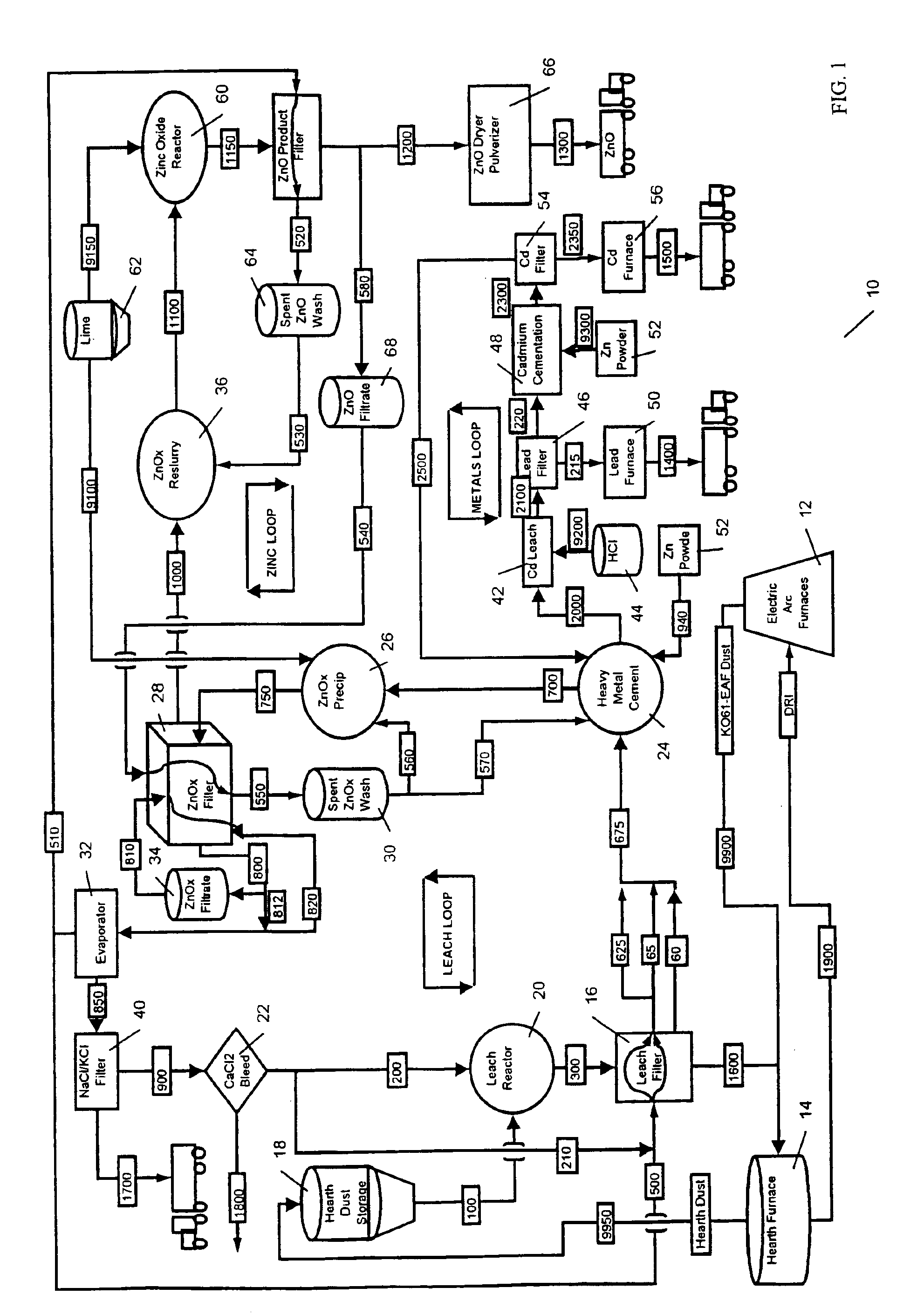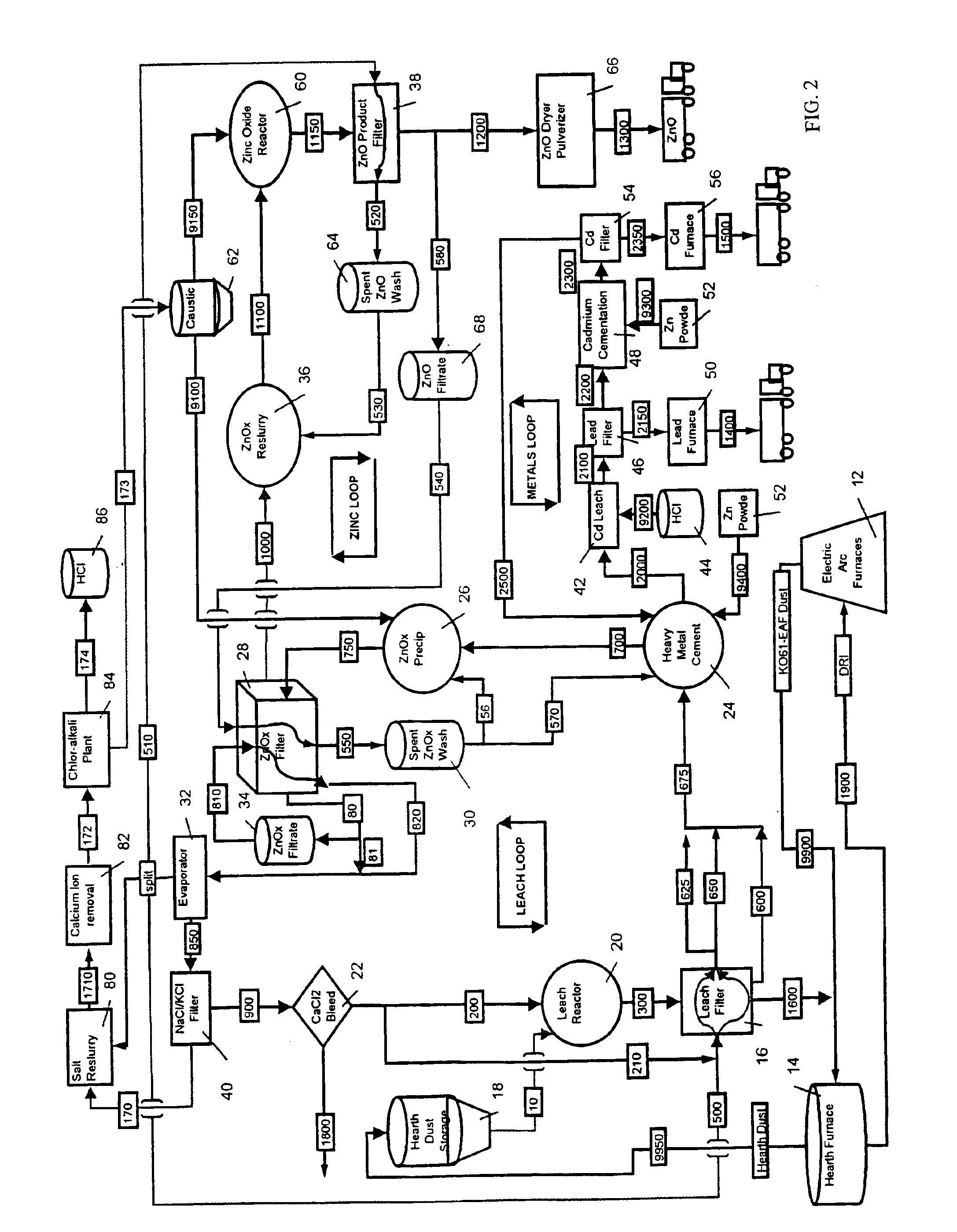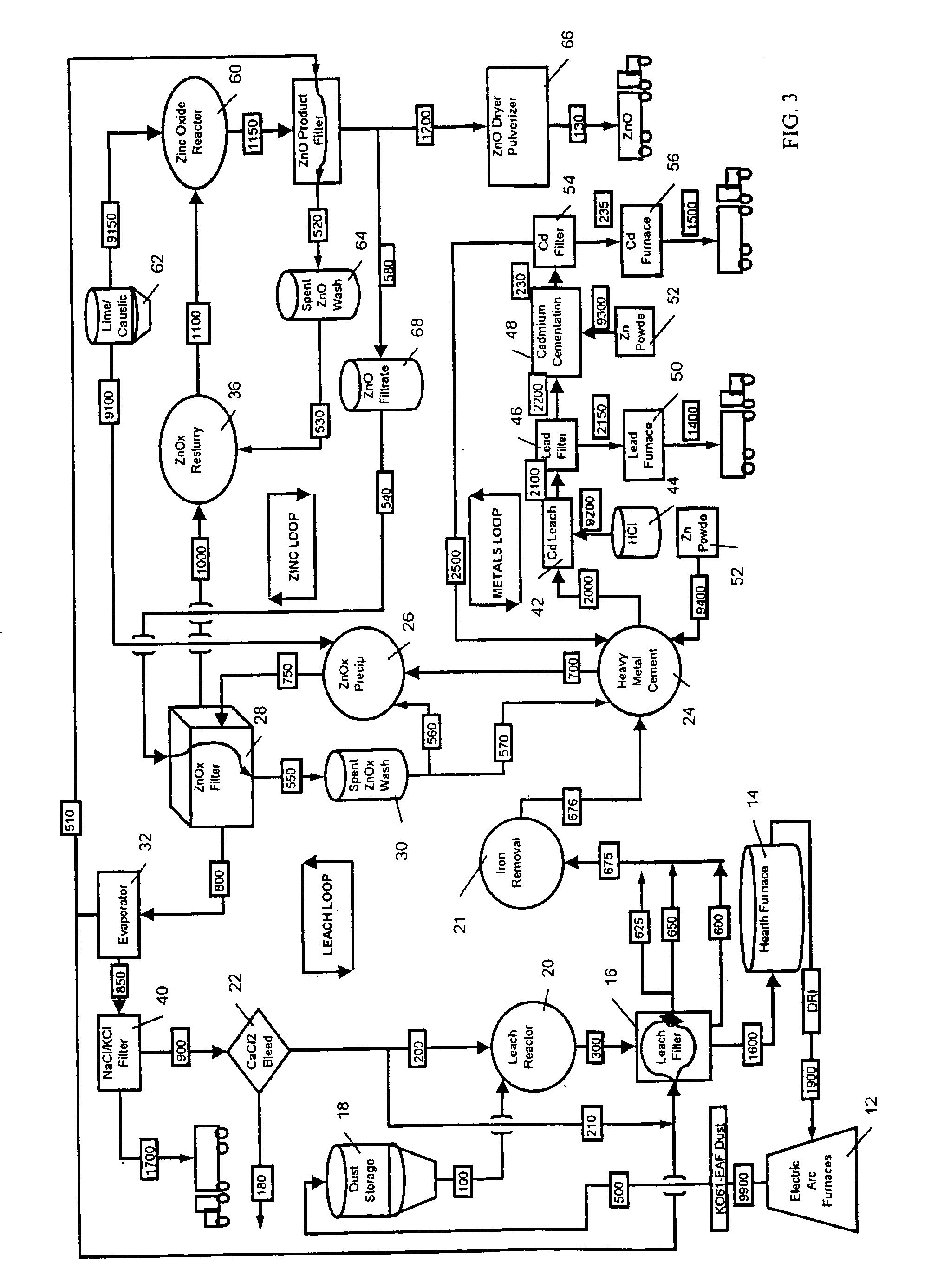Process to produce simonkolleite, zinc oxide and zinc hydroxide
a technology of zinc oxide and zinc hydroxide, which is applied in the direction of process efficiency improvement, chemistry apparatus and processes, and sulfur compounds, etc., can solve the problems of eaf dust waste production, uneconomical return to the arc furnace, and containing unwanted metals
- Summary
- Abstract
- Description
- Claims
- Application Information
AI Technical Summary
Benefits of technology
Problems solved by technology
Method used
Image
Examples
Embodiment Construction
A general overview of the process will first be described.
Electric Arc Furnace: Scrap iron, iron ore, carbon, calcium oxide, magnesium and oxygen along with other feed stock, is fed to a furnace. Two electrodes (probes) are used to melt the metal. Dust is emitted with metal vapor which turns to oxides, known as EAF Dust (KO-61). The Electric Arc Furnace could also be a blast furnace producing any type of steel. The process may comprise any metal furnace or metal process which makes dust or sludges with recoverable metals.
Rotary Hearth Furnace: The K061 may contain iron lead, copper, cadmium, silver and zinc and is mixed with carbon, and may further be mixed with calcium and magnesium rich stocks. This mixture is fed to the furnace and its metals are reduced (stripped of their oxides) in an oxygen reducing atmosphere. The non-volatile metal makes direct reduced iron and calcium / magnesium briquettes and a Hearth Dust rich in non-ferrous metals. Hearth dust includes zinc oxide, lead, c...
PUM
| Property | Measurement | Unit |
|---|---|---|
| Temperature | aaaaa | aaaaa |
| Temperature | aaaaa | aaaaa |
| Temperature | aaaaa | aaaaa |
Abstract
Description
Claims
Application Information
 Login to View More
Login to View More - R&D
- Intellectual Property
- Life Sciences
- Materials
- Tech Scout
- Unparalleled Data Quality
- Higher Quality Content
- 60% Fewer Hallucinations
Browse by: Latest US Patents, China's latest patents, Technical Efficacy Thesaurus, Application Domain, Technology Topic, Popular Technical Reports.
© 2025 PatSnap. All rights reserved.Legal|Privacy policy|Modern Slavery Act Transparency Statement|Sitemap|About US| Contact US: help@patsnap.com



